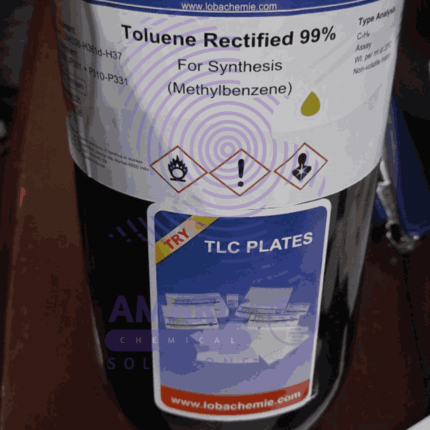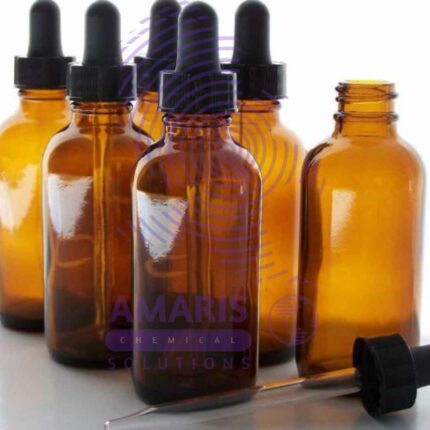“bell in vacuum” has been added to your cart. View cart

Toluene 2.5 liters
$1,745.00 Original price was: $1,745.00.$1,600.00Current price is: $1,600.00.

Universal Solution Indicator pH 4-11
$3,500.00 Original price was: $3,500.00.$3,000.00Current price is: $3,000.00.
Universal pH chart 1 to 14
$150.00 Original price was: $150.00.$100.00Current price is: $100.00.
Whatsapp Order
A Universal pH chart is a visual tool used to determine the pH level of a solution, indicating its acidity or alkalinity. The pH scale ranges from 0 to 14, with 7 being neutral. Values below 7 indicate acidity, while values above 7 indicate alkalinity. The chart is typically color-coded, with each color corresponding to a specific pH value.
How to Use the Universal pH Chart:
- Obtain a pH indicator: This can be in the form of pH paper strips or a liquid pH indicator solution.
- Test the solution: Dip the pH paper strip into the solution or add a few drops of the liquid indicator to the solution.
- Observe the color change: The pH paper or solution will change color based on the pH level of the solution.
- Compare the color: Match the resulting color to the corresponding color on the Universal pH chart to determine the pH value of the solution.
SKU:
ACS27926CHEM0
Category: LABORATORY EQUIPMENT & APPARATUS
Description
Table of Contents
ToggleUses of Universal Ph Chart
1. Educational Purposes
- Teaching Chemistry and Biology: It helps students understand the concept of pH, acidity, and alkalinity. Practical experiments involving pH testing can enhance learning.
- Laboratory Exercises: Used in school and university labs for experiments involving chemical reactions, where pH is a crucial parameter.
2. Environmental Science
- Water Quality Testing: Monitoring the pH of natural water bodies (rivers, lakes, oceans) to assess pollution levels and ecosystem health.
- Soil Testing: Determining soil pH to understand soil chemistry and fertility, which is vital for agriculture and gardening.
3. Healthcare and Medicine
- Medical Diagnostics: Testing pH of bodily fluids like urine and blood can help diagnose various health conditions. For instance, urine pH can indicate metabolic or kidney disorders.
- Pharmaceuticals: Ensuring the pH of medications is within a safe and effective range.
4. Food and Beverage Industry
- Quality Control: Monitoring the pH of food and beverages to ensure product safety, taste, and shelf life. For example, the fermentation process in dairy, brewing, and pickling relies on specific pH levels.
- Food Safety: Checking the pH of food products to prevent bacterial growth and contamination.
5. Industrial Applications
- Chemical Manufacturing: Ensuring the correct pH in chemical processes, which can affect reaction rates, product quality, and safety.
- Cosmetics: Formulating products like soaps, shampoos, and skincare items to ensure they are safe and effective for use on skin.
6. Aquariums and Aquaculture
- Aquarium Maintenance: Monitoring and maintaining the pH of aquarium water to ensure a healthy environment for aquatic life.
- Fish Farming: Managing the pH of water in fish farms to optimize conditions for fish health and growth.
7. Agriculture
- Fertilizer Application: Adjusting the pH of soil through the use of lime or sulfur to improve crop yields.
- Hydroponics: Maintaining the correct pH of nutrient solutions to ensure optimal plant growth in soilless cultivation.
8. Household Uses
- Swimming Pools: Regularly testing and adjusting the pH of pool water to maintain clear, safe water and prevent damage to pool surfaces and equipment.
- Cleaning Solutions: Ensuring that cleaning products have the appropriate pH for their intended use, for example, acidic solutions for removing lime scale.
9. Research and Development
- Scientific Research: Investigating the properties of new materials, chemicals, and biological substances by measuring their Ph.
- Product Development: Formulating new products in industries like cosmetics, food, and pharmaceuticals where pH is a critical factor.
Reviews (0)
Be the first to review “Universal pH chart 1 to 14” Cancel reply
Related products
Absorption Tower
$0.01
A laboratory absorption tower is a scaled-down version of an industrial absorption tower used for experimental purposes within a laboratory setting. It is a specialized piece of lab apparatus designed to investigate the principles of gas-liquid absorption or scrubbing processes under controlled conditions.
Typically, a lab absorption tower consists of a glass or transparent column filled with a packing material or trays to facilitate the gas-liquid contact. It is equipped with inlet and outlet ports to introduce the gas stream and remove the treated gas after absorption. Additionally, there are ports or connections to introduce the liquid solvent and monitor its flow rate. The tower may also have temperature and pressure control mechanisms to simulate specific conditions relevant to the experiment.
Laboratory absorption towers are essential tools for researchers, chemists, and engineers to study the behavior of gases and liquids during absorption processes, optimize process parameters, and assess the efficiency of different solvents or packing materials. These experiments contribute to the development and improvement of industrial-scale absorption systems and help in solving environmental challenges related to air and gas pollution.
Amber Bottles Polystop
$0.01
A laboratory glass amber bottle is a specialized container commonly used in laboratories to store and protect light-sensitive substances, chemicals, or solutions. These bottles are made from amber-colored glass, which provides protection against ultraviolet (UV) and visible light radiation. The amber glass helps to minimize the degradation and decomposition of light-sensitive contents by blocking a significant portion of the light spectrum.
The amber color of the glass is achieved by adding iron, sulfur, and other compounds during the glass manufacturing process. This coloration is what gives the bottles their distinctive amber or brown appearance.
Laboratory glass amber bottles typically come in various sizes, ranging from small volumes of a few milliliters to large capacities of several liters. They often have a screw-on or snap-on cap, providing a secure and airtight seal to prevent spills, evaporation, and contamination.
Due to their ability to protect light-sensitive substances, laboratory glass amber bottles are widely used in chemistry, biology, pharmaceuticals, and other scientific fields where sample integrity and stability are crucial.
Aspirator Bottle Glass
A laboratory aspirator glass bottle, also known as a vacuum aspirator bottle or a vacuum filtration flask, is a specialized glass container used in scientific laboratories for various applications. It is designed to create a vacuum or negative pressure, which allows the filtration of liquids through a porous medium like a filter paper or a membrane.
The bottle typically has a conical or pear-shaped body with a sidearm or neck near the top. This neck is where a rubber or silicone stopper is inserted, allowing for the attachment of tubing or a hose to connect to a vacuum source or water aspirator. (Available in 2.5l,5l,10l,)
Laboratory aspirator glass bottles are commonly used in vacuum filtration processes to separate a solid precipitate from a liquid solution. When connected to a vacuum source, the air inside the bottle is removed, creating a pressure difference that draws the liquid through the filter, leaving the solid behind on the filter paper.
These bottles come in various sizes to accommodate different filtration needs and are an essential tool in many research, analytical, and quality control laboratories for tasks like separating particulate matter, sterilizing solutions, and performing various filtration techniques. They are often made of durable borosilicate glass to withstand the pressure changes and chemical interactions that may occur during laboratory operations.
Atomic Model Set
$0.01
A lab atomic model set is a collection of physical models and materials designed to represent the structure of atoms and molecules. It is commonly used in educational and scientific laboratory settings to visually demonstrate the arrangement of protons, neutrons, and electrons within an atom, as well as the bonding patterns between atoms in molecules. These sets typically include colored balls of various sizes representing different types of atoms, as well as connectors or magnets to simulate chemical bonds between them. The purpose of these sets is to help students and researchers better understand the principles of atomic and molecular structure in a tangible and interactive way.
Balance Bathroom Scale
$0.01
bell in vacuum
$0.01
A "bell in vacuum" apparatus is a scientific setup used to demonstrate the effects of reduced air pressure (vacuum) on sound transmission. It typically consists of a bell or sound-producing object enclosed within a sealed chamber from which air has been removed, creating a low-pressure environment. This apparatus is designed to illustrate how sound travels differently in a vacuum compared to in normal atmospheric conditions, highlighting the role of air molecules in sound propagation.
bell in vacuum with air pump with plate
$0.01
A "bell in vacuum" apparatus is a scientific setup used to demonstrate the effects of reduced air pressure (vacuum) on sound transmission. It typically consists of a bell or sound-producing object enclosed within a sealed chamber from which air has been removed, creating a low-pressure environment. This apparatus is designed to illustrate how sound travels differently in a vacuum compared to in normal atmospheric conditions, highlighting the role of air molecules in sound propagation.



 LABORATORY EQUIPMENT & APPARATUS
LABORATORY EQUIPMENT & APPARATUS
 Fertilizers
Fertilizers Plant Growth Regulators
Plant Growth Regulators Soil Conditioners
Soil Conditioners Animal Feed Additives
Animal Feed Additives Biostimulants
Biostimulants Dough Conditioners
Dough Conditioners Flour Treatments
Flour Treatments Fat Replacers
Fat Replacers Preservatives (baking)
Preservatives (baking)
 Surfactants (cleaning)
Surfactants (cleaning) Builders
Builders Bleaching Agents
Bleaching Agents Enzymes
Enzymes Solvents (cleaning)
Solvents (cleaning) Fragrances
Fragrances






















Reviews
There are no reviews yet.